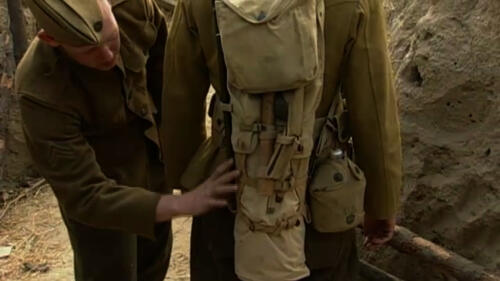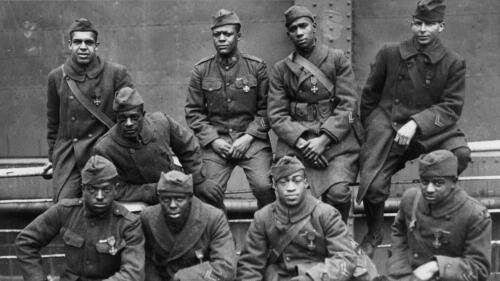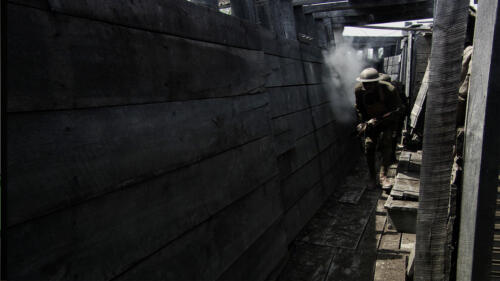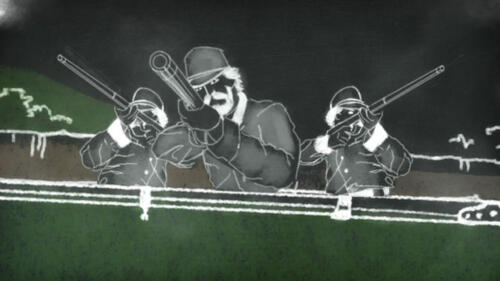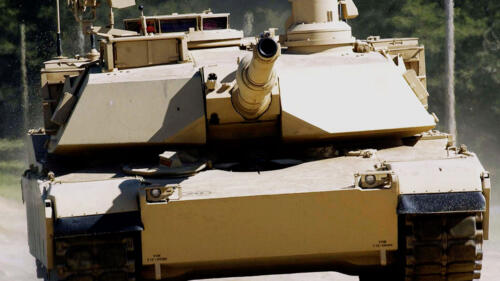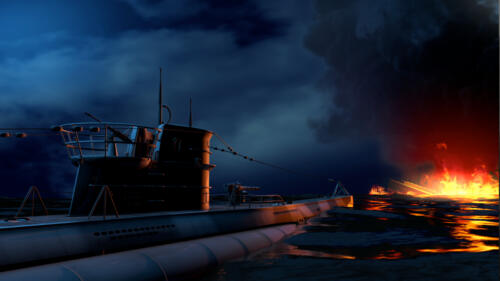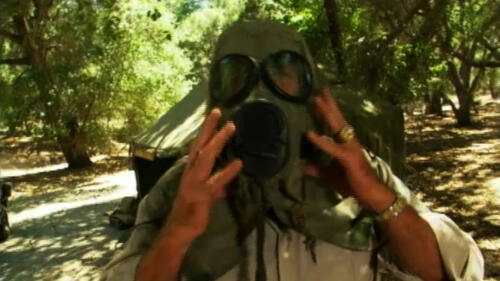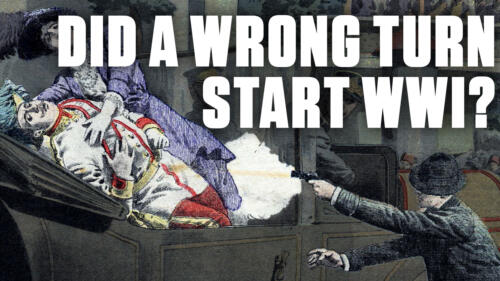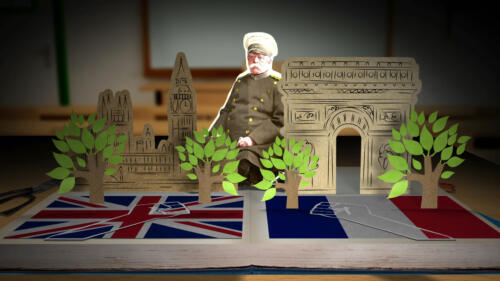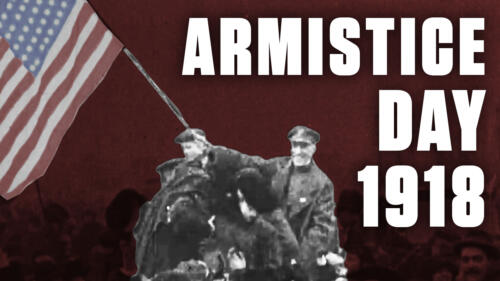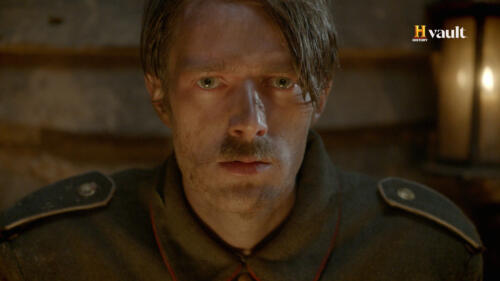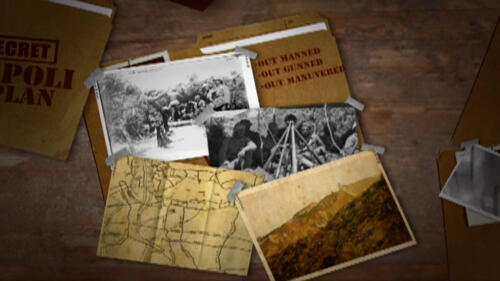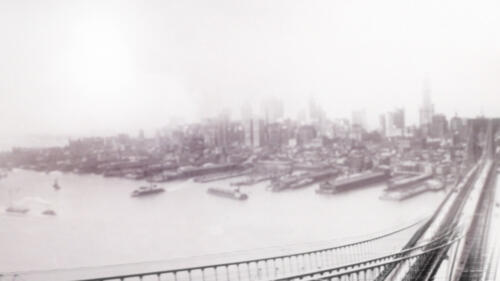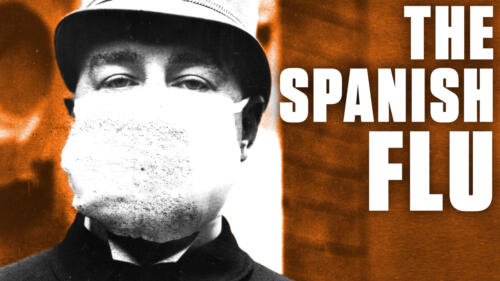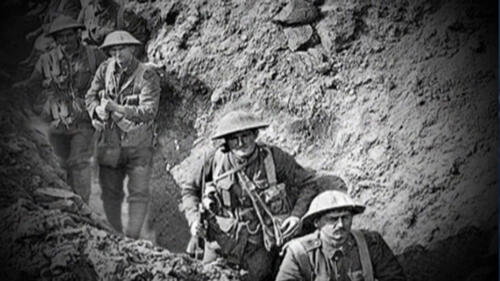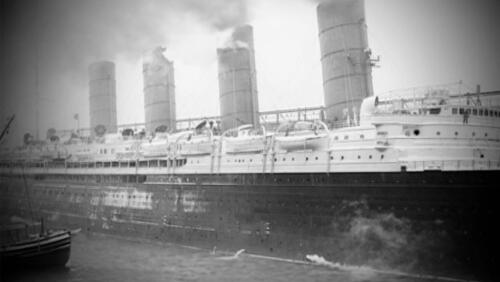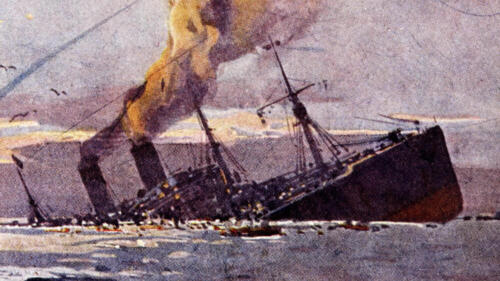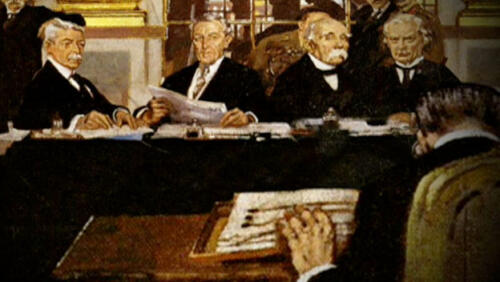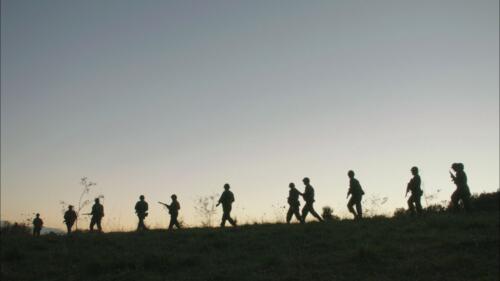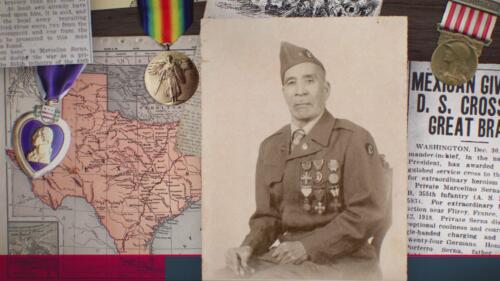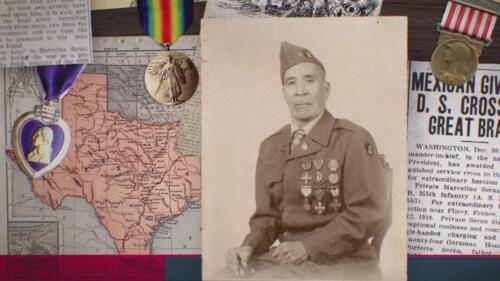Playlist
World War I
Scientists Discover the Cause of the Deadly Spanish Flu
In 1997 Dr.Johan Hultin excavated an indigenous village graveyard in hopes to find the cause of Spanish flu but found much more.
World War I Packs
In a Mail Call video, R. Lee Ermey answers a question from Mark of Kansas who wants to know what was in a World War I backpack. Ermey reveals that on top of all the other hardships WWI soldiers had to endure, their backpacks proved to be another annoyance. Men from the Great War Historical Society strapped on the WWI packs and completed some drills; by the end, they definitely felt the WWI soldiers pain. The bottom section of the backpack, known as the diaper, was detachable and carried the soldiers blanket, shelter half, and shelter half pole and pins. On the belt youd find ammo, a first aid kit, a canteen cover, and a canteen and cup. Inside the flaps were a baking tin, a condiment can, and boxes of bread rations. Also inside the flaps were a towel, soap dish, shaving kit, handkerchief, foot powder, and extra socks. Attached to the outside were the bayonet, shovel, trenching tool, and a mess kit. The entire weight of the pack lies entirely on the soldiers shoulders, making it very uncomfortable. If a soldier wanted to get anything out of his pack, he would have to stop, unravel everything, get what he needs, and then pack everything back up. Due to the placement of the bayonet, most soldiers would have to have a buddy put it back for them.
The Harlem Hellfighters
The Harlem Hellfighters were an African-American infantry unit in WWI who spent more time in combat than any other American unit. Despite their courage, sacrifice and dedication to their country, they returned home to face racism and segregation from their fellow countrymen.
How Gas Masks Work
In this video clip of History's Mail Call, host R. Lee Ermey takes a look at how gasmasks work and explains why those sold in surplus stores are not worth the money. Military gasmasks will save your life if they are made and worn properly. When poisonous fumes enter the mask it passes through a filter with a dense layer of carbon and thick padded air cleaner. It is then cleaned and provides fresh air to the soldier or person wearing the mask.
World War I Armistice Day Celebrations
On November 11, 1918, World War I finally came to an end after four-plus years of combat. Armistice Day was wildly celebrated throughout the world, and in this rare footage, we see how New York, Washington D.C. and Paris took to the streets with pure joy.
The Spanish Flu Was Deadlier Than World War I
In 1918 the Spanish Flu killed at least 50 million people around the world and was the second deadliest plague in history–after, well, the plague in the 1300s. But how exactly did a flu virus cause such massive death and destruction across the world?
